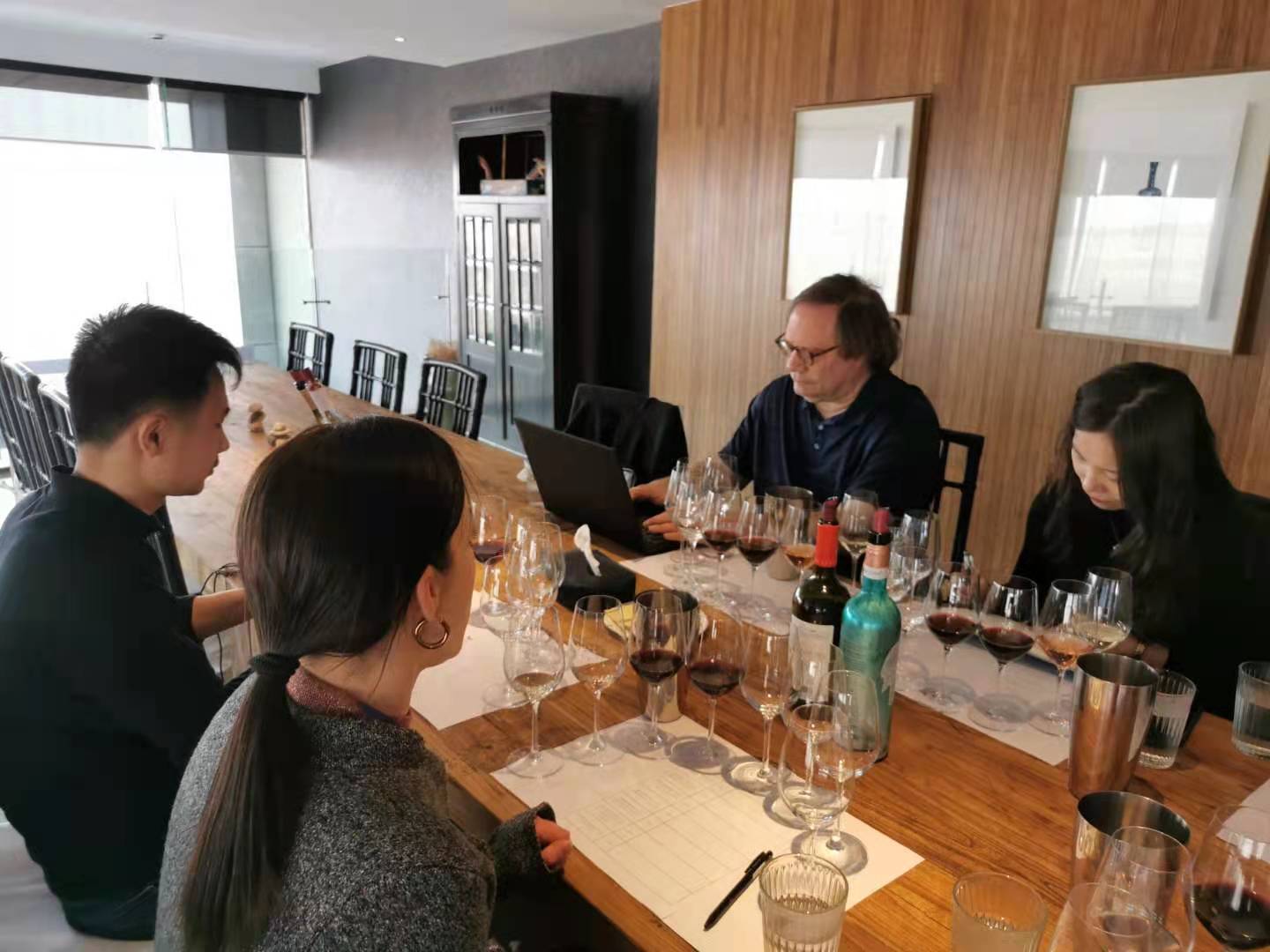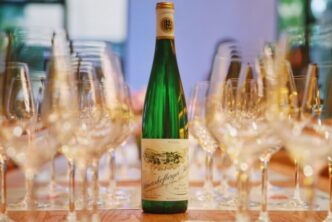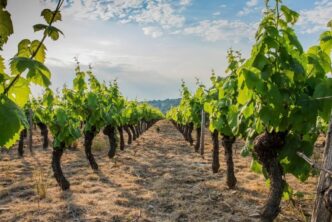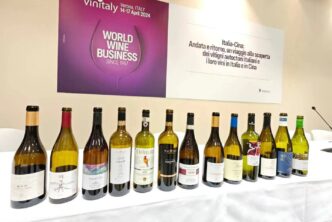过去的6年里,我有幸品尝了近千款中国葡萄酒,并且游历了怀来、宁夏和山东等几个风格各异的葡萄酒产区。一如既往地,我的旅行都原则性回避了赞助的品鉴和包办行程、免费住宿,我更喜欢亲力亲为去做这些事情,用我认为本就应该的方式去做,加上我在赏源、知味的好友(也是现同事)的帮助支持。这样一来,我得以巡游各地,拜访酒庄,与庄主和技术团队们见面,说出和记录我的感想,而不需要可笑地打出各种95+的分数来“求生”或是取悦任何人。我大概每隔一、两个月会例行访问中国葡萄酒产区,每次的时间都在五天到一周之间,在逐渐了解庄主和酿酒师们的过程中,我对中国葡萄酒现状的认识也越来越深入。

在此基础上我非常郑重和高兴地宣布,中国酒毫无疑问在这六年里取得了巨大的进步:首先,有很明显的迹象表明,一些葡萄品种已经非常出色地适应了中国的环境。更令我激动的是,中国显露出的潜力不仅仅在于生产世界级的好酒,而是生产能体现中国风土多样性的好作品。我亲历了意大利葡萄酒复兴的开端,也见证了加拿大/安大略省精品酒的起步,我经历过这些历史,所以我能注意到某些征兆,许多令人激动的东西马上要浮出水面了。我完全知道自己在说什么:我在此不加掩饰地声明,虽然中国酒还需要十年左右的时间才能在世界高端葡萄酒圈里打响名号,需要提升的地方还有很多,但毫无疑问的是,好酒的种子已经播下了,一些中国酒在未来必将达到巅峰。
迄今为止在中国表现突出的三个葡萄品种无疑是蛇龙珠(Cabernet Gernischt)、马瑟兰(Marselan)和小芒森(Petit Manseng)。中国酒里的品丽珠、雷司令、威代尔(包括晚采酒和冰酒)和贵人香也非常有前途(即便贵人香的形象有点打折扣,因为它经常是作为廉价入门级的口粮酒出现)。中国种有大量的赤霞珠、霞多丽和梅洛,这不稀奇(它们简直遍布全球),虽然这些品种也显示出一些潜力,但事实上类似的赤霞珠和霞多丽在世界上其它国家都能找到,而且不出意外的话,都比中国的版本更好更有趣(别去相信某款酒曾在一个蹩脚的国际葡萄酒比赛中得过什么荒唐的金奖还是白金奖的),所以任何脑子在线的消费者都不会有很多理由去购买这些品种的中国酒。

蛇龙珠曾在基因测序上与佳美娜(Carmenère)相联系,也的确有许多专家认为它们就是一致的品种。然而两个酿酒品种有着相同的基因序列并不代表它们就是完全相同:尽管我们目前对于基因测序的认知有限,我们也应迫切地认识到,在某一环境生长了数十年的葡萄品种是会通过改变基因型来适应所在地区外部刺激的。所以,如果在两个不同的地域种下两株相同品种的葡萄藤,它们只需要几个繁殖周期后就会演变成两个有差异的品种。因此中国的蛇龙珠与它在法国、意大利北部(意大利人为了图方便也叫它品丽珠,感慨这个国家现在成什么样了)的同胞都鲜有共同点,与智利佳美娜的相似度甚至更低。因此更正确的观点应该是将蛇龙珠视为佳美娜(如果它的确是佳美娜)在中国多样风土下长期适应后的生物型,并在此演变成一种独一无二,风格迥异的葡萄酒。我认为,把蛇龙珠视为一种中国葡萄品种并不是没有道理的。

在任何前提下,第一款给我惊喜的国产葡萄酒,就是一瓶单品种蛇龙珠,这已经是六年多以前的事情了。我从没忘记过它,这并不奇怪,高品质的佳美娜并不是随便哪个街角就能找到的(得更深入地找)。然而这些年来我已经见识到了许多款优质的中国蛇龙珠,都迸发着非凡的纯净度、香气和轻盈感。它们从不会特别饱满或者结构宏大,而是经常能给予难得的精致和芬芳、明快的多汁感,还有红色水果、甜香料的馥郁香气和味道,再加上恰到好处的一小撮草本气息来增添复杂度。诚然,作为晚熟品种的蛇龙珠往往需要达到完美的生理成熟度,不然就会百分百带来生青味和不适感,所以选择正确的风土就成了重中之重(例如,充分的阳光就非常有必要)。不过蛇龙珠的果穗比赤霞珠(更精确的说法是最早在中国种下的赤霞珠克隆)要稀松很多,所以总体来说它对于变幻多端的天气以及霉菌的抵抗力更高一些,这让蛇龙珠和许多中国风土更加般配(比如季风气候普遍的山东)。遗憾的是,更多酒农依然偏爱赤霞珠这个两者中更“重要”的品种,但是从酒的表现来比较,这种观念是错的。这就是中国酒农要认识到的最大教训,没有之一。别的不说,中国蛇龙珠所拥有的香气和风味是全世界任何地方的酒里都找不到的,赤霞珠们反而遍地都是,不足为奇。
马瑟兰是一个由赤霞珠和歌海娜杂交而来的品种,由法国人Paul Truel于1961年培育而来,出生地就在法国东南部的小镇Marseillan附近,由此得名Marselan(马瑟兰)。除开中国,它在法国朗格多克、乌拉圭、巴西和加州北部海岸也有种植。马瑟兰也许是当今中国优质葡萄酒中最激动人心的来源之一:它能打造出一系列中等酒体、充满芬芳、微微辛辣的红酒,散发出的明快果香和风味能让你的鼻腔和味蕾瞬间欣喜。它明亮的红色也很漂亮,尽管不同中国产区的马瑟兰在这方面似乎有很大差异(有些酒款的颜色要深很多);目前来看,这种风土带来的差异只是一种猜测,但以我对于酿酒葡萄以及它们风土表现的足够经验来看,这种猜测迟早会被证明是对的。要证明这一切,只需要更多数量的好酒样本,加上多一点的时间,大家就会慢慢发现这种微妙的差别。在我近期和中国葡萄专家乃至各级决策者的讨论中,我发现他们似乎有些担忧马瑟兰也许不是那么能陈年,但在我看来,这种结论的提出还是为时过早了。首先,马瑟兰在不同中国风土中的表现肯定是不同的:例如在宁夏的贫瘠土壤上,马瑟兰葡萄酒就不太可能会有过早熟化的现象。而且最主要的是,我认为当前优质马瑟兰葡萄酒的样本数量也不足以让人有效地判定其陈年能力。所以在现阶段就判断一种酒缺乏陈年能力是不对的,因为我们完全没有足够的有效数据来分析出结论。但我也指出,就算在某一天我们确定了马瑟兰不能陈年40、50年,那也不是问题。一方面,现在已经很少有人为了陈年而买酒了,另一方面,没有人会抱着“买来陈年”的目的去买勃艮第红葡萄酒或者埃特纳红葡萄酒(现在世界上两大最火最抢手的葡萄酒),即使它们的确有很强的陈年能力。实话说吧,没有人会在乎他们的慕西妮(Musigny)特级园葡萄酒能存放多少年,这不是它们购买的原因。对于马瑟兰来说也是这个道理。

最后一定要提的是小芒森。作为法国瑞朗松产区(Jurançon)的主要品种,它既可以酿出好干白又能酿成迷人甜酒,而它在中国的表现也非常出色。几乎每一个我去过的酒庄里,最好的酒都是小芒森,这一定不是巧合。因此我相信小芒森就是最适合中国的葡萄品种,它在未来一定会贡献出大量的好酒,包括干型和甜型。再一次强调,这对蛇龙珠也同样适用(虽然还是不如赤霞珠那么受关注)。中国的酿酒人不应该再在霞多丽、长相思或维欧尼这些白葡萄品种上花如此大功夫了。举个例子,至今也没有任何迹象表明维欧尼在中国能酿出哪怕像样点的酒,所以何必呢?还是专注于目前表现更好的品种才对。我已经发现一些中国晚采小芒森葡萄酒几乎具备了媲美世界顶级葡萄酒的能力,这才是大家应该大下功夫的葡萄品种。尤其是我认为小芒森也能在中国做出很有趣的干白,近年份的九顶庄园小芒森就是个很好的例子。
 晚采小芒森的果实
晚采小芒森的果实
我真心相信,如果中国的酒农和酿酒师能在已经证明表现优异的那些葡萄品种上多花点心思,而不是一味地、不论对错地追随一些“更著名”的品种,中国葡萄酒产业的未来会更加光明。这对于全国各地的许许多多家庭来说都意味着重要的潜在收入和财富来源,所以我的建议不能被轻视。我非常自豪和高兴能与赏源和知味一同站在中国葡萄酒潮流的前线,一起创造现代化、世界级的中国葡萄酒产业。我曾有过类似的经历,我也期待着未来的道路和任务。
在即将于五月在上海举办的2021中国葡萄酒峰会上,我将举办一场大师班,讲解中国的蛇龙珠、马瑟兰和小芒森,并将这三个品种的国产酒与世界各国葡萄酒进行比较。这次品鉴所用的所有国产酒款都已包含在我的报告中,它们是我认为中国酒庄最具有代表性和发展潜力的一些葡萄酒。完整的品评报告将在下个月发布于赏源葡萄酒评论,敬请关注。
部分品鉴笔记
Cabernet Gernischt
Chateau Nine Peaks 2019 Cabernet Gernischt Tsingtao Collection 93
Medium dark ruby-red, this is noticeably deeper ruby than the 2013, 2016 and 2018, all of which are characterized by a brighter red (and to my way of thinking, prettier) colour. Intensely floral (violet!) and spicy with very pure aromas and flavours of black and blue fruit complicated by aromatic herbs and an obvious mineral nuance. The finish is long, vibrant and suave, denoting very good fruit-acid-tannin balance. This was macerated for 25 days (longer than the 22 days of previous years), and at higher temperatures as well than was done previously. It was aged in one and two year used 225 litre barrels for 12 months (no new oak). The 2019 vintage was remarkable for being a very dry year, with water stress a real concern in some moments of the year (the Cabernet Gernischt was planted at Chateau Nine Peaks only in 2012); however, Cabernet Gernischt is better suited than Cabernet Sauvignon to dealing with rainy weather (its less compact bunch makes it less prone to rot-associated problems) but the trade-off is that too much rain makes the Gernischt even more vigorous than it already is. Apparently this vintage’s much darker colour is the result of the drier year, but in fact it’s not the only aspect in which this wine differs from all the other Cabernet Gernischt wines I tried at this estate. To date, the best Cabernet Gernischt wine made at the estate remains the very great 2013, but the 2019 is also a very good wine. Drinking window: 2024-2032.
Xige Estate 2017 Cabernet Gernischt Jade Dove 92
Vivid red. Bright red fruit, vanilla, violet, and cracked black pepper aromas on the perfumed nose. Enters very clean and smooth. Then similarly suave in the middle and on the long finish, this medium-bodied beauty stays light on its feet but also flavourful, with similar notes in the mouth to those on the nose. The aftertaste is pleasantly round and insidiously sweet coconutty note. The first vintage of this wine aged in US oak (30%), which explains the sweet coconut note (the US oak component has been lowered to 20% with the 2018 vintage). The Cabernet Gernischt was always harvested in mid-September because in China they want to pick it early so as to concentrate on the Cabernet Sauvignon still hanging in the vineyards, but the winemaker here correctly wanted to give Gernischt a chance to shine by delaying its harvest to October 10-15. A wise move, and well done. Further good news is the estate is planning to release in the near future a premium grade wine made with this variety. Drinking window: now-2030.
Marselan
Domaine Zijing/Amethyst yard 2018 Marselan Huailai 91
Luminous red. The initially subdued nose needs a little coaxing and air to showcase its sweetly ripe but fresh red fruit, herbal and spicy aromas. Repeating notes of herbs and sweet spices plus a syrupy sweetness to the red fruit flavours linger on the finish, which boasts a nice glycerol mouth feel. Not the last word in complexity but easy-going and smooth, this is a very pretty well-made wine that offers plenty of early appeal. Aged 13 months in French oak (about 27% new). 100% Marselan. Drinking window: 2022-2027.
Domaine Franco-Chinois 2014 Marselan Reserve Huailai 92
Vivid red. Enticing aromas of fresh red berries, minerals and spicy herbs have a strong violet top note. Well-balanced and smooth on entry and in the middle, with clean, fresh red fruit, saline, and herbal elements persisting nicely on the suave aftertaste. A hint of freshly cracked black pepper and of grilled beef adds complexity. A very pretty wine that packs in lots of flavour and only 13.5% alcohol. This is ready to drink now but a year or so in the cellar will only add to its many charms. Drinking window: 2023-2030.
Silver Heights 2017 Marselan Jin Shan Ningxia 93
Bright, very pretty medium-dark red colour that is not needlessly deep. Fresh, fruity aromas of red berries, sweet spices, tobacco and minerals jump from the glass. More metallic, steely even, than when I last tasted this wine (about two months before) but vibrant, clean and pure, with lively red fruit flavours complemented by a strong spicy note on the long, suave back end. I really like this pretty red wine’s up-front charm and juicy red fruit personality. You’ll find that after the first sip you’ll be immediately looking to have another, so just make sure your mother-in-law isn’t anywhere in sight. Owner and winemaker Emma Gao apprenticed at Chateau Calon-Ségur in Saint-Estèphe and that training, along with her passion, drive and talent guarantee that if there is one Chinese estate that will be making world class wines ten years from now, this is one of those I am willing to bet on. Drinking window: now-2028.
Petit Manseng
Domaine Franco-Chinois 2016 Petit Manseng Huailai 94
Bright, medium-deep golden-yellow. Thick aromas and flavours of glazed kumquat, candied mango, canned pineapple, caramel, vanilla and cinnamon. Bright lemony and fresh on entry, then rich and dense in the mouth too, but with a vibrant mouth feel thanks to harmonious acidity providing noteworthy clarity and cut. Finishes long and suave with very good balanced sweetness. A thick dessert-styled wine that will match well not just to sweet desserts but also to pumpkin soups, roast chicken with mushrooms and aged cheeses. I guarantee that if you try similarly sweet wines with something other than desserts you’ll be pleasantly surprised. Drinking window: now-2030
Longting Vineyard 2019 Petit Manseng Late Harvest Longting Art Series 92
Bright pale golden-tinged yellow colour. Explosive aromas of green papaya, fresh citrus and honey on the captivating nose. Then very rich and luscious, but with very nice lift and acid-sugar balance (270 g/L residual sugar and 6.6 g/l total acidity) to the orange marmalade, candied lemon peel and fruit cocktail flavours that are long and clean. A true late harvest, the grapes were picked in early November, but despite the late picking date, this is neither especially thick nor dense, but rather stays pleasantly light on its feet and vivid. The wine was aged in stainless steel after winemaker Larsen tried partial oak aging in the 2016 and was unimpressed with the results. I also tasted the 2016 (and the 2018 too) Petit Manseng wines from this estate and I agree that this is the best of the bunch. Well done. Drinking window: 2022-2028.

 English
English



